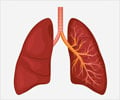Acetylcysteine Medication Information
Learn everything you need to know about Acetylcysteine-pronunciation, uses, dosage guidelines, indications, and when to take or avoid it.
Get up-to-date information on side effects, precautions, warnings, and proper storage to ensure safe usage.
Explore Acetylcysteine brand names commonly used in India and internationally, along with detailed pricing information. Consult your healthcare provider for tailored medical advice.
Generic Name : Acetylcysteine Pronunciation : a-SEET-il-SIS-teen ICD Code : Y55.4 Therapeutic Classification : Expectorant and Cough ProductsBrand Names or Trade Names of Acetylcysteine
India :
International :
ACC, Acemuc, Acemuk, Acetyst, Acetadote, Asist, Bronkyl, Brunac eyedrops, Fluimucil, Fluimukan, Flumil, Flutafin, Lysox, Mucinac, Mucohelp, Mucolysin, Mucomelt-A, MUCOMIX, Mucomyst, NAC AL, Nytex, Parvolex, PharmaNAC, Rheunac, Siran, Solmucaïne, Trebon N, Vlenolys.
Why is Acetylcysteine Prescribed? (Indications)
Acetylcysteine reduces the mucus plugging by breaking down the thick mucus in the airways and facilitates breathing in conditions like chronic bronchopulmonary disease and cystic fibrosis, a disorder that affects lungs.It is also used to treat paracetamol overdose.
When should Acetylcysteine not be taken? (Contraindications)
Hypersensitivity.What is the dosage of Acetylcysteine?
The recommended dose for most patients is 3 to 5 mL of the 20% solution or 6 to 10 mL of the 10% solution three to four times a day.How should Acetylcysteine be taken?
It comes as a sterile unpreserved solution (not for injection) in vials containing a 10% (100 mg/mL) or 20% (200 mg/mL) solution of acetylcysteine.What are the warnings and precautions for Acetylcysteine?
•Caution needed for pregnant and breastfeeding women.• Do not mix acetylcysteine with other inhaled medications unless directed by the doctor.










